|
We all know that our pets are curious creatures and can often find their way into things that aren’t intended for them. Houseplants can provide a tempting snack option to some dogs and cats, particularly those that like to chew on things or graze. However, many plants are poisonous to pets and, if ingested, can cause symptoms ranging from mild irritation to death in extreme cases. Dealing with a pet that has been poisoned is scary and can quickly land your dog or cat in the veterinary clinic for detoxification measures and supportive care (or an even worse fate). As a responsible pet owner, it’s your duty to familiarize yourself with the safety of the plants in and around your home as well as what to do in the event of ingestion. Here is a short list of some common poisonous plants and what you should do if you suspect your pet has gotten into one. 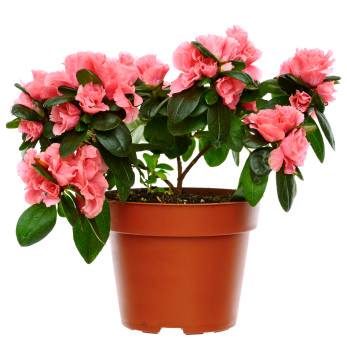 Azalea AzaleaThe azalea, also known as rhododendron, is a flowering shrub that is harmful to both dogs and cats if ingested. The toxic element of the azalea, grayantoxin, disrupts nerve and muscle function. Signs of intoxication can range from oral irritation (usually recognized by pet owners as excessive drooling or pawing at the face or mouth) to vomiting and diarrhea, muscle weakness or even sudden collapse and death in severe cases. 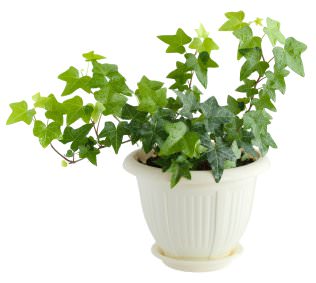 English Ivy English IvyEnglish ivy, also known as California or sweetheart ivy, is another common indoor decorative plant that can be toxic to dogs and cats if eaten. The toxin responsible for the ill effects seen with English ivy ingestion is a triterpanoid saponin. Saponins are chemical compounds known for their characteristic foaming quality and, while not all are toxic, the dangerous ones can lead to irritation of the mouth and gastrointestinal tract when consumed. Symptoms of intoxication from English ivy can include abdominal pain, vomiting and diarrhea or excessive salivation. 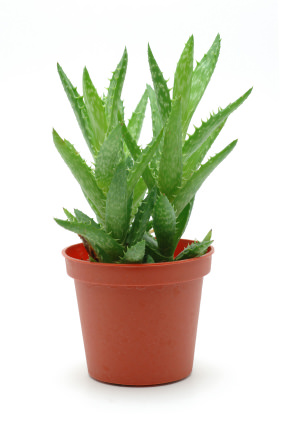 Aloe Vera Aloe VeraAloe vera, a houseplant popular for its wide variety of medicinal uses, is surprisingly toxic to pets. Saponins are also the causative agent involved in aloe toxicity. The toxic parts of aloe vera are limited to the skin and inner layers of the plant, rendering the gel inside relatively harmless. Ingestion of the leafy portions of the plant can cause vomiting, diarrhea and even tremors in dogs and cats. 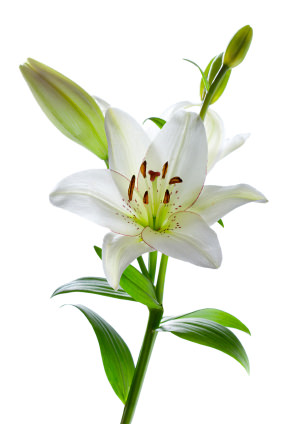 Lily LilyLilies tend to be a popular plant for gift-giving and decorating during the holidays. Though lilies make a lovely centerpiece, they can cause severe kidney failure in cats if ingested. The toxic property of lilies is unknown, however, they are so highly poisonous to cats that even the pollen from one lily can cause detrimental organ effects. Species of lilies that are known to be toxic to cats include (but aren’t limited to) the day, tiger, Asiatic, Easter and Japanese lilies. However, to be safe it’s probably best that lilies simply not be kept in a household with cats. Lilies are not known to be toxic to dogs. 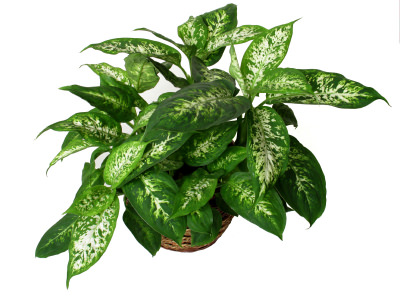 Dieffenbachia DieffenbachiaDieffenbachia, also referred to as dumb cane, is a common indoor plant, popular for its broad, colorful leaves. The toxic component, oxalic acid, can cause oral irritation as well as vomiting and diarrhea in cats and dogs. The leaves, stalk and root of this plant are all poisonous if ingested. 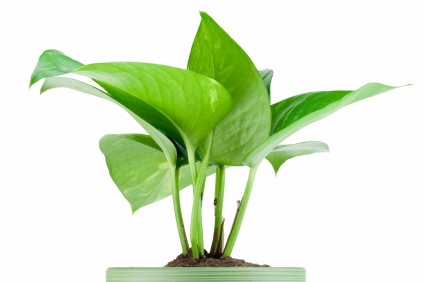 Philodendron PhilodendronPhilodendron, commonly known as the hurricane or Swiss cheese plant, is another oxalate-containing plant with toxic properties similar to that of dieffenbachia. Chewing on plants that contain oxalates releases small crystals which can irritate the mouth and gastrointestinal tract of dogs and cats. Signs of ingestion include pawing at the face and mouth (due to burning and irritation), excessive drooling, vomiting and difficulty breathing in some cases. 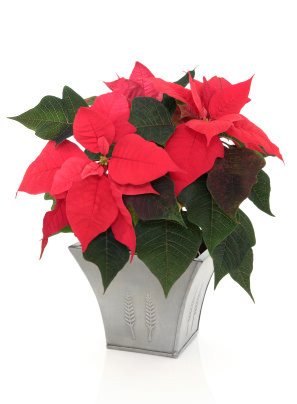 Poinsettia and Mistletoe Poinsettia and MistletoeWho doesn’t love to adorn their dining table with a bright, festive poinsettia during the holiday season? These popular plants can be attractive to your pet also. The toxic component of poinsettia is an irritant sap, and while generally considered only mildly toxic, ingestion can cause vomiting, diarrhea and oral irritation in cats and dogs. While we’re on the subject of holiday plants, be careful where you hang that mistletoe since it can be toxic if ingested, too. Mistletoe contains two different toxins, toxalbumin and pharatoxin viscumin, which can cause gastrointestinal symptoms such as vomiting and diarrhea, as well as cardiac collapse in severe cases. 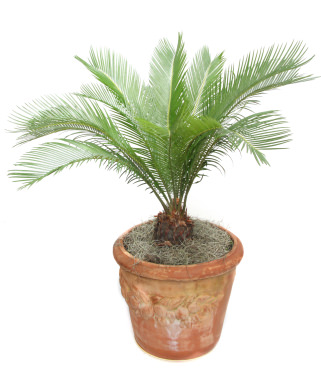 Sago Palm Sago PalmThe Sago palm, also known as the coontie or cardboard palm, is a popular indoor decorative plant and can be highly toxic to dogs and cats when ingested. The poisonous agent of the sago palm is cycasin, which adversely affects the gastrointestinal tract and can cause liver failure in some cases. Signs of intoxication can include vomiting, bloody diarrhea, symptoms of liver failure (often seen as bruising or yellowing of the skin, increased thirst or anorexia) and even death. The seeds of the Sago Palm are considered most toxic, however, all parts of the palm are poisonous. 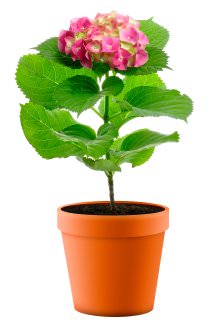 Hydrangea Hydrangeas may be beautiful to look at, however, the flowers of this popular plant, if consumed, can lead to vomiting and diarrhea in dogs and cats. The toxic component of this plant is a cyanogenic glycoside, although symptoms of true cyanide poisoning are rarely seen. Gastrointestinal symptoms are more typical with hydrangea intoxication. 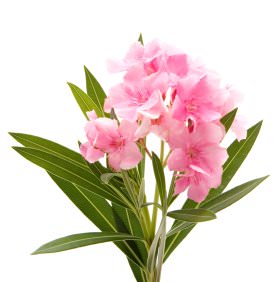 Oleander OleanderThough not generally an indoor plant, the popularity of oleander as a component of outdoor gardens in the United States warrants its mention in this article. The toxic element of the oleander plant is a cardiac glycoside that can cause life-threatening heart arrhythmias if ingested. All parts of the plant are poisonous and dogs and cats can become intoxicated from having direct access to an oleander shrub or from eating pruned leaves or fallen branches that have collected in the yard. If you know or suspect your dog or cat may have ingested a toxic plant, wipe your pet’s mouth out with a cold, wet cloth and contact your veterinarian’s office or the ASPCA’s Animal Poison Control Center at 888-426-4435 right away. Even if your pet isn’t showing any adverse symptoms, it is still necessary to alert your veterinarian, as signs of intoxication can often occur hours after ingestion. Sources ASPCA, “Toxic and Non-Toxic Plants,” www.aspca.org, accessed on October 1, 2013. Cornell University College of Agriculture and Life Sciences, “Plants Poisonous to Livestock: Saponins,” www.ansci.cornell.edu, accessed on October 1, 2013. Cote, Etienne, DVM, DACVIM. Clinical Veterinary Advisor: Dogs and Cats. (Missouri: Mosby, Inc, 2007). 638-639. Medline Plus, “Dieffenbachia Poisoning,” www.nlm.nih.gov, accessed on October 2, 2013. Pet Poison Helpline, www.petpoisonhelpline.com, accessed on October 2, 2013. PetMD, “Ten Common Poisonous Plants for Dogs,” www.petmd.com, accessed on October 1, 2013. PetMD, “Ten Common Poisonous Plants for Cats,” www.petmed.com, accessed on October 1, 2013. |
